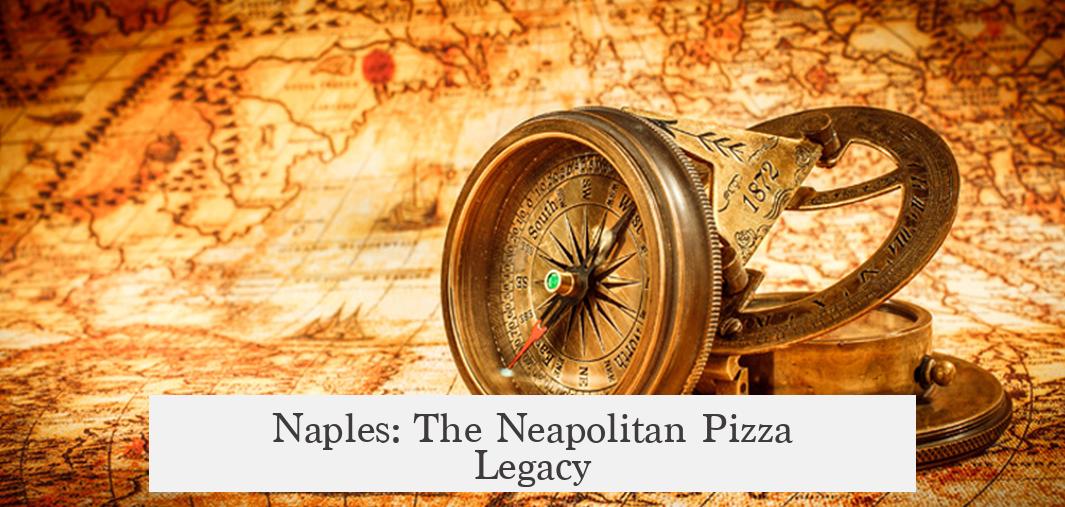Pizza’s invention defies attribution to a single place or moment due to its deep roots in many cultures’ flatbread traditions. The modern pizza we recognize evolved mainly in Naples, Italy, but similar bread dishes with toppings have existed globally for centuries.
Flatbreads topped with various ingredients form an ancient culinary theme. These foodstuffs appear in different regions, ranging from Middle Eastern to Mediterranean cultures, complicating efforts to pinpoint pizza’s exact origin. It remains unclear whether Italian pizza developed uniquely or emerged contemporaneously alongside other similar breads.
Naples stakes a strong historical claim to pizza. The city’s bakers, by the early modern period, baked yeast-leavened doughs with olive oil and a variety of toppings, creating localized versions akin to focaccia. One early Neapolitan dish resembling pizza was a savory flat cake called “galette,” often bearing additions such as olives, cheese, or fish. Such breads predate Italy’s political unification.
The creation of the Pizza Margherita in 1889 by the Neapolitan chef Raffaele Esposito significantly shaped pizza’s modern identity. Esposito topped a flatbread with tomato sauce, mozzarella, and basil. These toppings symbolized the Italian flag’s red, white, and green colors. The dish was presented to and endorsed by Queen Margherita of Savoy, lending pizza cultural stature tied to Italian unity.
Regional variations within Italy multiply the pizza narrative. Southern staples like Sicily’s sfincione—a focaccia with tomatoes, breadcrumbs, and anchovies—show marked differences from Neapolitan pizzas. Neapolitans often distinguish between focaccia and pizza, defining pizza by specific dough and topping combinations.
Italian immigrants transported these diverse traditions abroad, producing new pizza styles. For instance, New York-style pizza evolved from Neapolitan techniques, featuring thinner crusts and more abundant toppings. Meanwhile, “grandma” or “Sicilian” pizzas—square, thicker pies—reflect Sicilian recipes adapted for American tastes and ingredient availability.
Definitions of pizza vary widely, with common elements including a wet dough baked at high heat and topped with regional ingredients. Although similar flatbreads with toppings existed worldwide, pizza’s unique refinement occurred largely through working-class Italian bakers and immigrant communities between the 19th and 20th centuries.
The history of pizza faces challenges due to limited written sources. Early recipe books prioritized aristocratic cuisines, so the communal, working-class origins of pizza have not been well documented. As a result, historians wrestle with gaps when tracing pizza’s exact roots. The absence of contemporary records means pizza’s story remains layered and complex.
Pizza illustrates cultural exchange and evolution rather than a linear invention. Its current form is a product of geographic, social, and historical influences. Naples’ role is central but not exclusive; multiple Italian regions and immigrant communities contributed to pizza’s diversity.
| Aspect | Details |
|---|---|
| Ancient Flatbreads | Precursor foods with various toppings existed worldwide. |
| Neapolitan Heritage | Long tradition of yeast dough breads with toppings, early “galette” akin to pizza. |
| Pizza Margherita (1889) | Significant modern creation honoring Italian unification, endorsed by royalty. |
| Regional Variations | Focaccia, sfincione in Italy; New York and Sicilian styles abroad. |
| Historical Documentation | Scarce records on working-class foods obscure precise origins. |
- Pizza lacks a single point of invention because flatbread with toppings is common worldwide.
- Naples’ pizza tradition predates modern Italy, influencing the dish’s evolution.
- The 1889 Pizza Margherita symbolizes pizza’s modern identity and Italian unity.
- Various Italian breads and diaspora adaptations create multiple pizza styles.
- Defining pizza precisely remains difficult due to regional diversity and sparse early records.
Where Was Pizza Invented and Why Are There So Many Various Claims to Its Invention?

Pizza wasn’t invented in a single place or moment, but rather evolved from countless ancient flatbreads topped with various ingredients, with Naples, Italy, later shaping its modern form and cultural significance. That’s the short answer to a surprisingly tangled question. But why does pizza’s origin story seem like a patchwork quilt with so many elusive patches? Let’s slice into this tale and chew through the facts.
First, imagine a world long before the greasy slices of pepperoni and gooey mozzarella conquered your cravings. The core idea behind pizza is simple: flatbread with toppings. This concept is as old as cooking itself, and it pops up in many cultures across history. From Middle Eastern flatbreads drizzled with olive oil, to focaccia-like breads in Italy, various societies baked “pizza” long before the word was coined. Flatbreads with things on top are basically culinary common sense.
This common culinary foundation instantly challenges the very notion that pizza could have a singular point of invention. So, what really makes a pizza? Is it the dough? The toppings? The method of baking? The answer is messy. Food evolves with the people who make it, responding to geography, available ingredients, and cultural exchange. It’s a bit like asking who invented music — a nearly impossible question that glosses over rich, overlapping traditions.
Naples: The Neapolitan Pizza Legacy

When people talk about pizza origins, they nearly always mention Naples. Naples stakes a strong claim stretching back centuries. Even before the famous travels of Marco Polo, bakers in Naples were crafting breads akin to what we might recognize as early pizza relatives.
One such predecessor is the “galette,” a flat cake or pie, often savory and topped with olives, cheese, or fish. This variety echoes focaccia, a style of Italian bread known for its olive oil richness and flexibility in toppings. Naples is like the aunt who perfected the family recipe amidst a wide clan of bread-bakers spread throughout Italy.
Yet, it wasn’t until 1889 that Naples gave pizza a modern twist that echoed far beyond its borders. Enter Raffaele Esposito, who baked the Pizza Margherita for Queen Margherita of Savoy. This pizza featured tomato (red), mozzarella (white), and basil (green), together symbolizing the Italian flag. Legend says the queen adored the dish, and suddenly, pizza transformed into an edible emblem of Italian identity.
This was not just a happy snack. It mirrored Italy’s cultural unification, lending pizza a patriotic narrative that helped cement its place in culinary history.
Regional Variations That Keep The Debate Alive

Hold your pizza cutters—Italy’s regional bread heritage adds to the confusion. Beyond Naples, other regions proudly boast their pizza-like breads, sometimes sparking intense debates over what counts as “real pizza.”
Take Sicily’s sfincione, a thick focaccia topped with tomatoes, breadcrumbs, and anchovies. Many Neapolitans would shout, “That’s focaccia, not pizza!”—a fiery culinary distinction fueled by deep-rooted traditions.
Italian immigrants brought these diverse traditions to the United States, where further fusion occurred. The classic New York-style pizza, with its thin crust and generous toppings, derives from Neapolitan roots but evolved separately. Meanwhile, the “grandma” or “Sicilian” slice, a square pizza with a fluffy crust, closely resembles sfincione but often offers more cheese and meat thanks to American abundance.
These variations represent more than just taste preferences. They are markers of cultural identity and adaptation, illustrating how pizza is less a static invention than a flexible, evolving food tradition.
So, What Exactly Is Pizza?

Even defining pizza is a challenge. Broadly, it’s a wet dough cooked at relatively high heat with various regional toppings. But if you trace the roots of this method, you find influences extending beyond Italy, to the Middle East and East Asia. Still, many food historians draw a line here, classifying those earlier flatbreads as distinct from pizza.
Why? Because pizza, in its recognizable modern face, is deeply tied to Italian working-class culture and the global Italian diaspora of the 19th and 20th centuries. Its techniques, ingredients, and consumption habits are closely linked to Naples’ culinary innovations, even as regional variations flourish.
The Slippery Nature of Pizza’s Origin Story

Food history is rarely neat. The lack of written sources about everyday foods like pizza adds layers of mystery. Cookbooks from early times tend to reflect the tastes of royalty and elites, not the working classes who baked and sold these breads in communal ovens. This absence muddies the archaeological waters.
The earliest mentions of pizza as a patriotic food correspond with the Italian royal family adopting it in the modern era. Prior to this, pizza and its predecessors were humble, community-oriented foods — constantly changing with each baker’s touch.
What this means is pizza’s invention isn’t a tidy story with a clear inventor. It’s a communal, decades-turned-centuries-long creative process. It’s shaped by countless hands, fireplaces, and hungry mouths across cultures and time.
Final Thoughts: A Dish That Defies Origin Myths

Does it frustrate you that we can’t pin down pizza’s exact birthplace with a neat “Eureka!” moment? It should—and that’s part of pizza’s charm. Like all great foods, pizza is a shared human heritage. The many claims to its invention remind us that culinary creations belong to the people who make and enjoy them, not just to a specific place or time.
Next time you bite into a slice, savor not just the flavors but the history baked into every crust. From Middle Eastern flatbreads to Neapolitan pies to American slices packed with toppings, pizza is a global story. Maybe the real invention was simply the human knack for turning simple ingredients into something delicious and meaningful.
Summary Table: Why Pizza’s Origin Is Complicated
| Reason | Explanation |
|---|---|
| Multiple Ancient Flatbreads | Flatbreads with toppings existed worldwide long before “pizza” emerged as a concept. |
| Naples’ Central Role | Naples provided key innovations such as Pizza Margherita tied to Italian national identity. |
| Regional Bread Traditions | Italy’s many regions offer similar but distinct bread dishes like focaccia and sfincione. |
| Italian-American Adaptations | Immigrants blended traditions to create new styles like New York and Sicilian pizza. |
| Lack of Historical Records | Working-class origins of pizza mean fewer written sources, complicating its exact tracing. |
So, where was pizza invented? Everywhere and nowhere. Pizza is a living tradition, shaped by culture, history, and countless kitchens—both humble and grand. That’s part of its magic.




